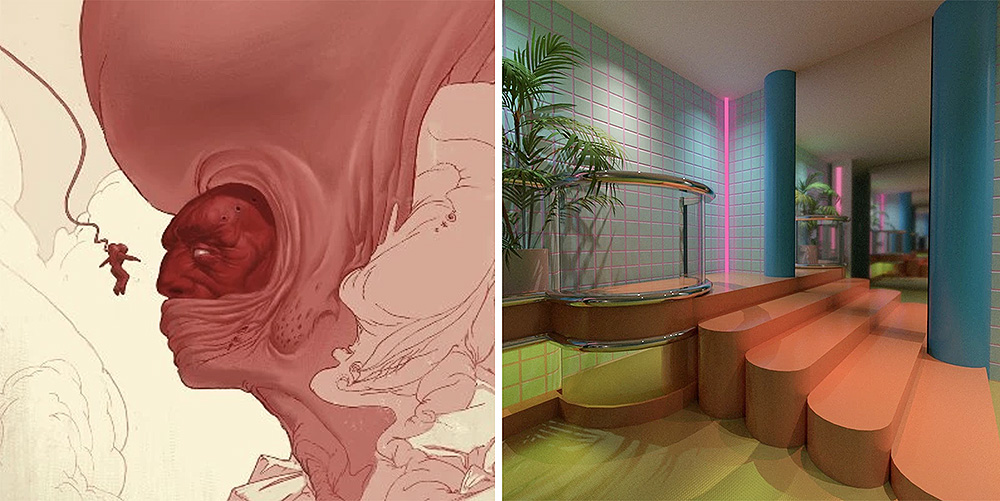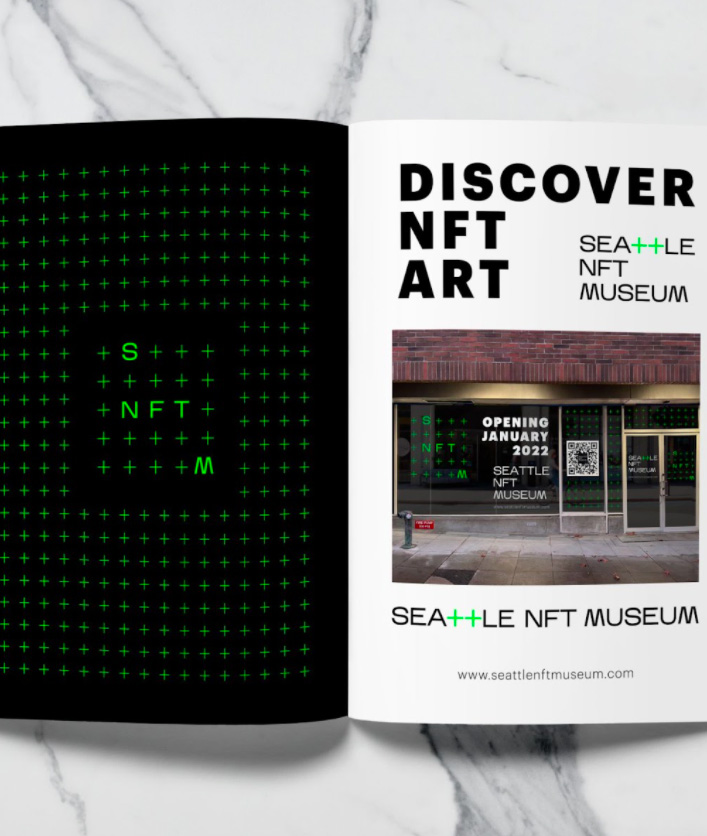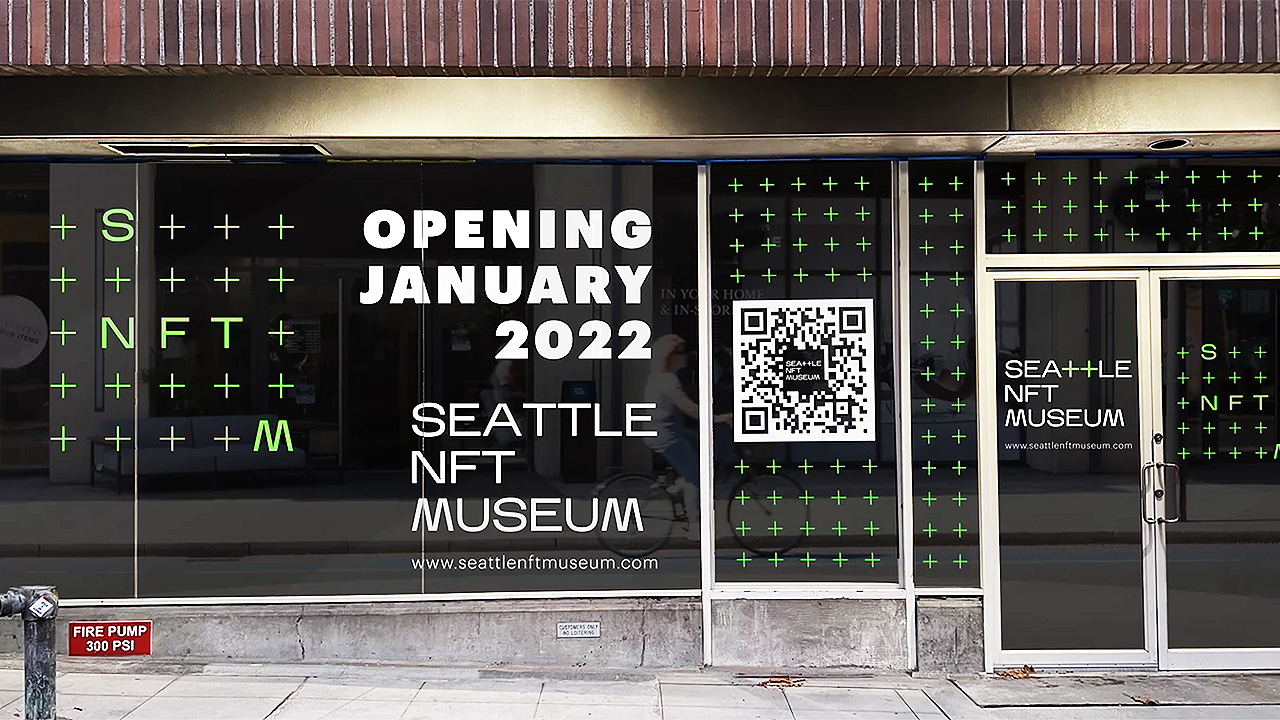However splashy a debut the NFT enjoyed on the auction block early in 2021, museums, as repositories of our cultural inheritance, were naturally wary of fully engaging with the medium beyond its commercial potential. But no such nerves at the upcoming Seattle NFT Museum (SNFTM), set to be the city’s first NFT art gallery. When it launches on January 14, 2022, the venue will be fully dedicated to exhibiting NFT art, educating visitors about NFTs, and supporting the local crypto art community, in turn situating the form as part of a contemporary art lineage.
The SNFTM is the brainchild of founders Jennifer Wong and Peter Hamilton, long-time blockchain investors who bought and minted their first NFTs earlier this year. Unlike most NFT collectors, though, they saw more that could be done to spotlight crypto creativity. “Our goal is to make the museum approachable and inviting for anyone interested in exploring NFT art,” Hamilton tells Jing Culture & Commerce. “We want the experience of visiting the SNFTM to provoke thought, discourse, and interpretation for this type of art form.”
For its inaugural showcase, the SNFTM has lined up NFTs by creators from Robbie Trevino to Blake Kathryn, as well as loans from collector Aaron Bird, which include “CryptoPunk #553.” The blockchain works are set to be physically displayed on Samsung’s The Frame screens, equipped with 4K QLED displays, while QR codes accompanying each artwork will unlock access to online platforms, allowing for further virtual interactions with the work.

The SNFTM will feature works from Seattle creatives such as Robbie Trevino (left) and Neon Saltwater (right), as part of its push to nurture the local crypto art community. Images: Seattle NFT Museum
But the SNFTM’s ambitions don’t end there. “In the future, we look to bring additional forms of NFTs such as music, gaming, collectibles, fashion, and sports,” says Wong. “We’ll also bring in guest curators to create exhibitions.” Here, the founders elaborate on how the museum hopes to vastly expand our NFT horizons by highlighting the diverse utilities and possibilities of the medium.
What was the motivation behind launching an NFT museum in Seattle?
Hamilton: There is a boom in curiosity about NFTs across the general public. The Seattle NFT Museum is approachable for anyone who has heard the term NFT and wants to learn a little more. We also want to make digital art more accessible. There is so much amazing work that goes unseen with a lack of education for the general public. The barrier to learning about NFTs is great, with new messaging platforms, technologies, and marketplaces. We believe that a physical space will bring exposure to digital art and artists, helping more people see the value of digital mediums backed by smart contracts.
How would you describe the museum’s mission?
Hamilton: Inspiration, education, and community are the three pillars of this dedicated physical space, and there are elements of all three that are missing from digital forums and platforms. The fidelity and size of displays makes space for inspiration that smartphone scrolling can’t provide. As powerful as online communities have become, there is little substitute for looking at art, standing next to another person. We need both worlds, and we know there will be so many opportunities to bridge the metaverse with physical experiences in the future.

Besides being a showcase for NFT art, the museum hopes to highlight NFT applications across music, gaming, collectibles, fashion, and sports. Image: Seattle NFT Museum
How is the museum planning to approach the curation and programming of NFT works and exhibitions?
Wong: For the opening exhibition, we wanted to showcase the diversity of NFT art. Most people have an image of CryptoPunk in mind as what NFT art represents. We wanted to show the different types of NFT art, from generative art to 1:1 to 3D rendering to AI to hand-drawn. Our rotating exhibitions will have new themes and headline artists, but always a strong focus on showcasing Pacific Northwest artists. We have already met so many incredible Seattle artists — and know there are more out there — and want to give them a forum to showcase their work.
How will your partnership with Samsung aid in your exhibition strategy?
Wong: We chose a consumer product because we want museum visitors to experience something that could easily be recreated for private spaces and homes. In addition, most displays developed for displaying NFT art are not flexible enough to manage a large number of screens at once. Samsung’s app marketplace allows for fast innovation on multi-screen display technologies.
What is your view on how the marketplace for NFTs has exploded in 2021?
Wong: It’s exciting to see the interest of NFT this past year. NFTs are a trend at the intersection of technology, finance, and culture with potential for innovation and social impact that goes beyond the market speculation. While the media has been fixated with commercial possibilities of art since the Beeple auction, NFTs have a wide range of emerging applications for gaming, sports, collectibles, utilities, and virtual environments.
And what is your take on how traditional museums have engaged with NFT art and commerce?
Wong: Over the past year, I’ve seen news about traditional museums acquiring one to two NFT pieces to show in their space. But these have been exceptions rather than the rule. Museums have done little to add to the dialogue on the progressive possibilities that NFTs provide for the art world. NFTs and digital forms of art present a meaningful opportunity for museums to increase accessibility to their collections, connect with a wider and younger community globally, and raise funds in a post-pandemic world.
Museums need to acknowledge NFTs as a natural step in the evolution of contemporary art, in sync with our digitally-driven lives whose emergence has only been accelerated by the pandemic.



